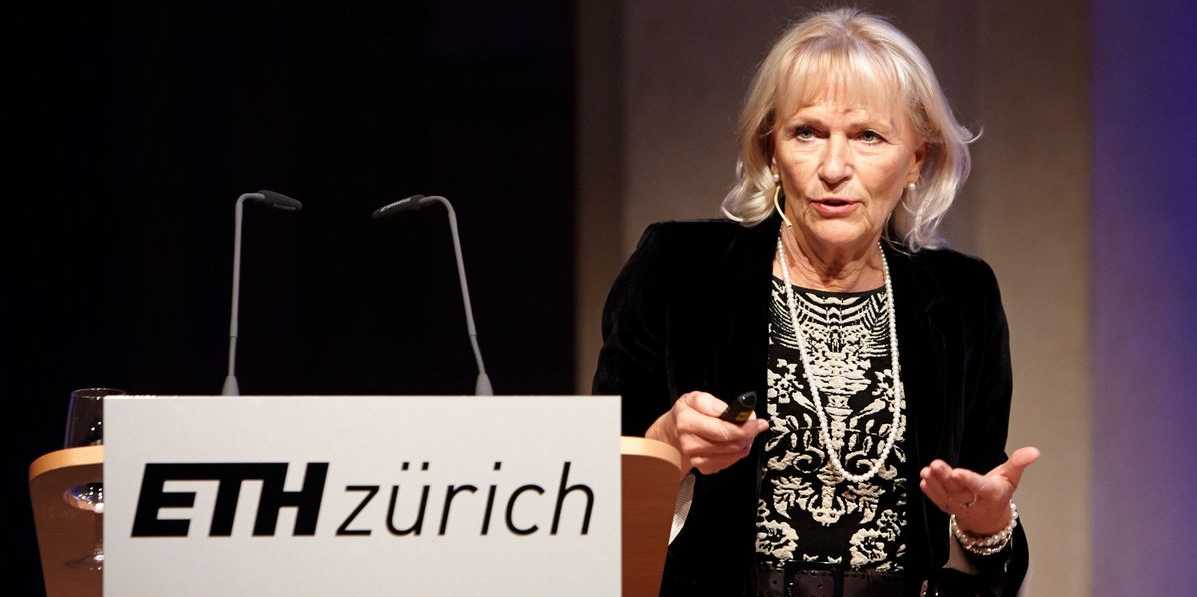Persistent and curious
As Professor of Particle Physics, Felicitas Pauss played a key role in the discovery of the Higgs boson. Tomorrow, she will be honoured with the Richard Ernst Medal.

If it had been up to her parents, she would have become a musician. But Felicitas Pauss had other plans: "Already as a child, I was interested in technology," says the Austrian-born scientist. "So when I started high school and got my first glimpse inside the fascinating world of the atom, I knew there was no way I was going to pursue an artistic career."
Involved in two important discoveries
Since then, Pauss has wanted to know the inmost force which binds the world together. As one of the leaders of the CMS experiment at the Large Hadron Collider (LHC) at CERN in Geneva, the ETH Professor Emeritus played a key role in proving the experimental evidence for the existence of the famous Higgs particle. This discovery in 2012 was also the basis for the Nobel Prize in Physics awarded the following year.
"I've been really lucky in my scientific career. Back in the 1980s, I was involved in the discovery of the Z boson, which was also the basis for a Nobel Prize," she remembers. But her curiosity has still not been satisfied: "It would be great if we discovered something with the LHC that could not be predicted by the Standard Model of particle physics."
Research at the limits of technology
In a TV interview, Pauss once said: "You must ask targeted questions and never give up." It's precisely this persistence that she has shown as a researcher. The construction of the CMS experiment required not only considerable patience, but also years of technological developments. "In particle physics, we work at the limits of what is feasible, so we have to develop many of the technologically complex detector components ourselves." Pauss made a significant contribution to the success of the CMS in this area, with important parts of the detector developed at ETH under her leadership.
"Many people doubted whether a facility as complex as the LHC together with the experiments could really work." In her view, the project's success is also due to the way decisions are made at CERN. "Our success model is the peer review committee system," she says. She also draws parallels with music: "A concert is only a success if all the members of the orchestra play their instruments perfectly," she says. "It's the same in particle physics."
Time for her own research
Over the past few years, Pauss has been closely involved with other projects alongside her teaching and research work. Between 2009 and 2013, she was responsible for international relations at CERN, and was subsequently international affairs advisor to the ETH President and President of the ETH Lecturer's Conference. She has also given many lectures and interviews on particle physics. During the interview, it soon becomes clear why she's a popular spokesperson with the media: few researchers can communicate such a complex research field as eloquently and vividly as Pauss.
Since her retirement in autumn 2016, she has finally had more time for science again: despite all the successes she has enjoyed during her long career, she still dreams of discovering something truly new that pushes the boundaries of what we know today.
Richard Ernst Lecture
On Wednesday, 17 May 2017 at 4 p.m in the Auditorium Maximum, ETH Professor Emeritus of Particle Physics Felicitas Pauss will be giving the Richard R. Ernst Lecture on the subject of "Science without Borders: The Mystery of Matter, Space and Time". The event is open to the public and free of charge. Registration is not necessary.
Information on the event can be found here.

